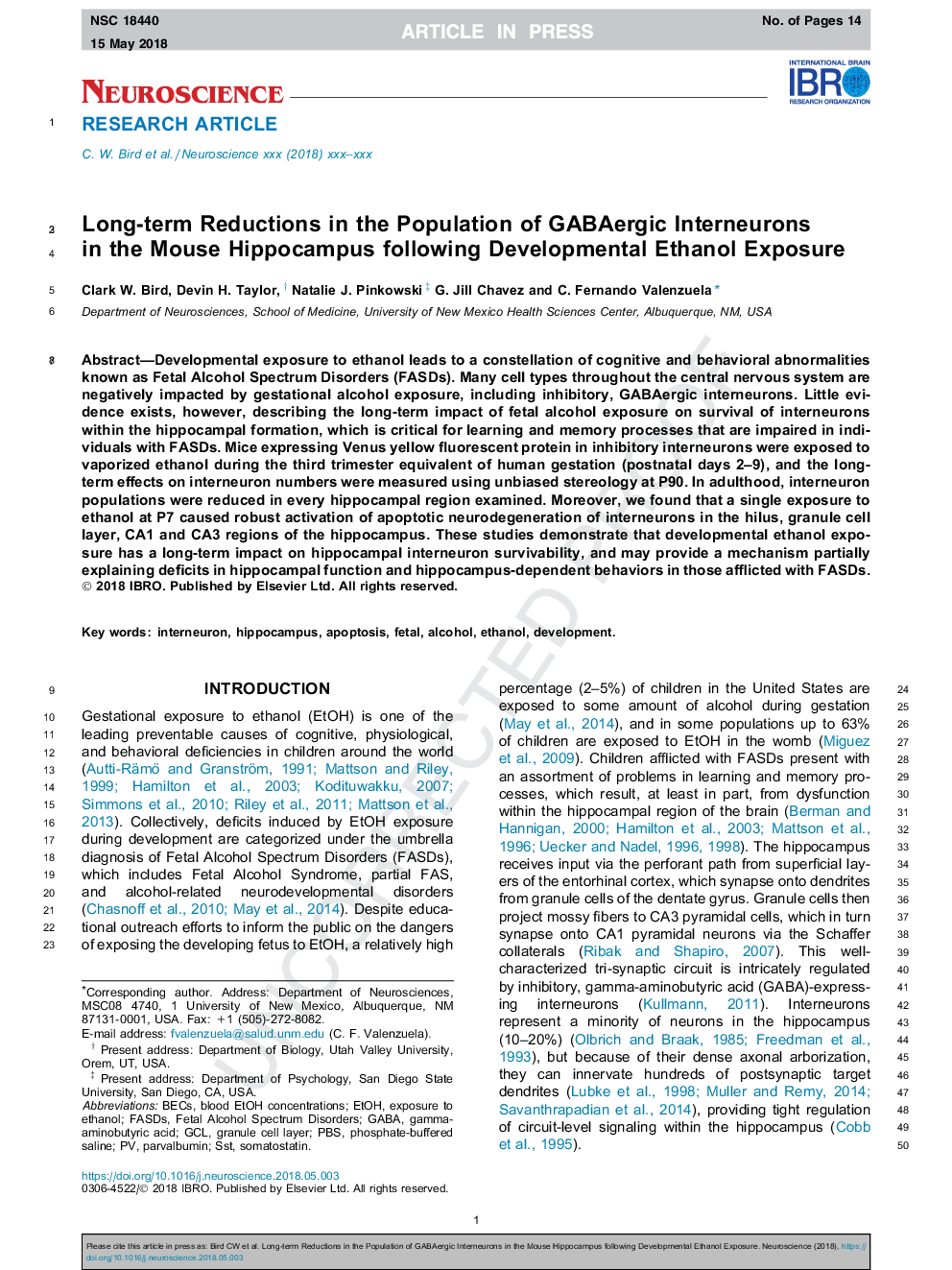| Article ID | Journal | Published Year | Pages | File Type |
|---|---|---|---|---|
| 8840674 | Neuroscience | 2018 | 14 Pages |
Abstract
Developmental exposure to ethanol leads to a constellation of cognitive and behavioral abnormalities known as Fetal Alcohol Spectrum Disorders (FASDs). Many cell types throughout the central nervous system are negatively impacted by gestational alcohol exposure, including inhibitory, GABAergic interneurons. Little evidence exists, however, describing the long-term impact of fetal alcohol exposure on survival of interneurons within the hippocampal formation, which is critical for learning and memory processes that are impaired in individuals with FASDs. Mice expressing Venus yellow fluorescent protein in inhibitory interneurons were exposed to vaporized ethanol during the third trimester equivalent of human gestation (postnatal days 2-9), and the long-term effects on interneuron numbers were measured using unbiased stereology at P90. In adulthood, interneuron populations were reduced in every hippocampal region examined. Moreover, we found that a single exposure to ethanol at P7 caused robust activation of apoptotic neurodegeneration of interneurons in the hilus, granule cell layer, CA1 and CA3 regions of the hippocampus. These studies demonstrate that developmental ethanol exposure has a long-term impact on hippocampal interneuron survivability, and may provide a mechanism partially explaining deficits in hippocampal function and hippocampus-dependent behaviors in those afflicted with FASDs.
Keywords
Related Topics
Life Sciences
Neuroscience
Neuroscience (General)
Authors
Clark W. Bird, Devin H. Taylor, Natalie J. Pinkowski, G. Jill Chavez, C. Fernando Valenzuela,
